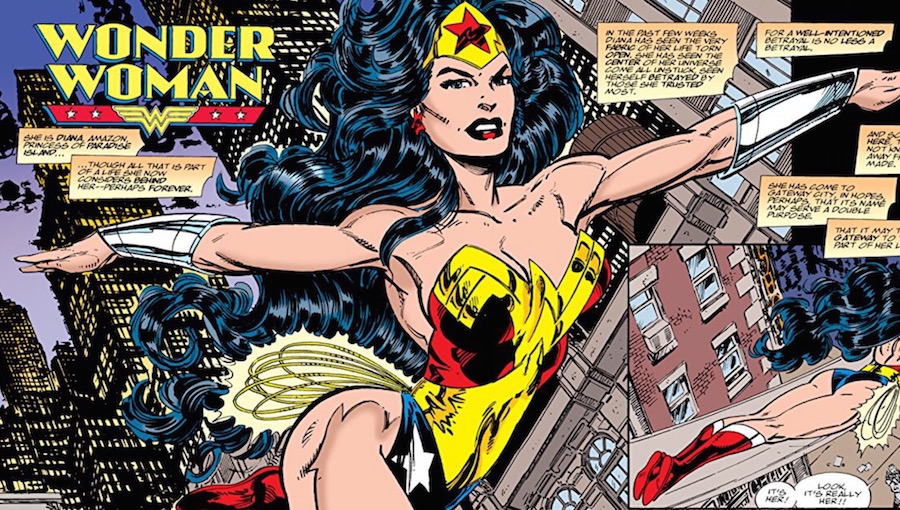One of my all-time favorite comic creators is John Byrne. Most famous for his run on The Uncanny X-Men with writer Chris Claremont, Byrne boasts an epic resume, and that resume includes Wonder Woman.
They say older music, for the first time in history is outselling current music. Supposedly, because it’s so much better than what is being currently made. It makes me wonder if the same thing holds true with comics. IDW is releasing an “Artist’s Artifact” version of John Byrne’s run on the
X-Men: an over-sized, black-andwhite collection that shows off the nooks and crannies and grime and grit of what a penciller and inker brought to the comic page before comics turned mostly digital in production. It’s really amazing to see the nuances of plunder and persecution up close. I can’t wait until it comes out in June. It seems like most younger fans are familiar with Days of Future Past and The Dark Phoenix Saga. Now is that because newer fans are reading back issues, or because the ideas are constantly being rehashed all the time?
I spend a lot of time in a great John Byrne fan group on Facebook called “Byrne Victims,” and it’s astonishing how many active Byrne fans there are, considering he hasn’t really been in the mainstream for a considerable time, focusing more on private commissions. This gave me the idea to revisit John’s fairly lengthy, 30-plus issue run.
As much as I love John Byrne, I think his run on Wonder Woman was a little misguided with a few missteps. Byrne himself even admitted not being able to get a good handle on the character, citing he wound up using She-Hulk’s face out of frustration.
Let no one ever say the ’90s were a victimless crime. Wanting to conform to some of the current art trends, Byrne added a few flourishes that weren’t really consistent with his style, such as over-sized gauntlets in lieu of the smaller bracelets, a huge headband, and a rather large mane of flowing ’90s hair. Master of detail, George Perez famously teased Byrne for being lazy by reducing the number of stars on Diana’s shorts to only 2.
It seemed like Byrne’s agendas got in the way of any character development for Diana. He wanted to clear up her Post-Crisis on Infinite Earths continuity by having her mother go back and fight as Wonder Woman alongside the JSA. This did not sit well with readers, as this would make Diana the second Wonder Woman to her own mother.
Byrne also tried to clean up the almost comical Donna Troy debacle by explaining Donna as a mirror image twin of Diana that was created by magic, so she would have someone to play with. That is until the villain Dark Angel kidnapped the clone, thinking it was Hippolyta’s daughter, and forced her to live one torturous life over and over again. Poor Donna can’t catch a break.
It also suffered from gimmickry. It was at a time when the most original thing writers could think of was killing the main character. Hey! If it’s good enough for Superman. Byrne did, indeed, kill off Diana with a cover announcing the death of Princess Diana (notably coming out the week of the death of Diana, Princess of Windsor in real life). I suppose that makes Byrne a time traveler for all of you conspiracy theory buffs. Of course, Byrne resurrected her and elevated her to the Goddess of Truth, apparently to make her powerful enough to stand alongside the big boys. Hmmm?
Okay, so looking back at it, maybe Byrne didn’t have the best run in Wonder Woman, but I say it’s entertaining enough to check it out. The art is always fun, and Byrne manages to work in a lot of other characters from the DCU, and it’s always fun to get his take.
It wasn’t all bad. He did introduce the Cassie Sandsmark Wonder Girl, after all. And the art got better toward the end of the run, when he turned his inking style back to one that looked more like his own. (Darn ’90s!)
I would love to see Byrne take another crack at Wonder Woman. What do you guys think?
Follow me on Instagram (@michaelfitztroy).

